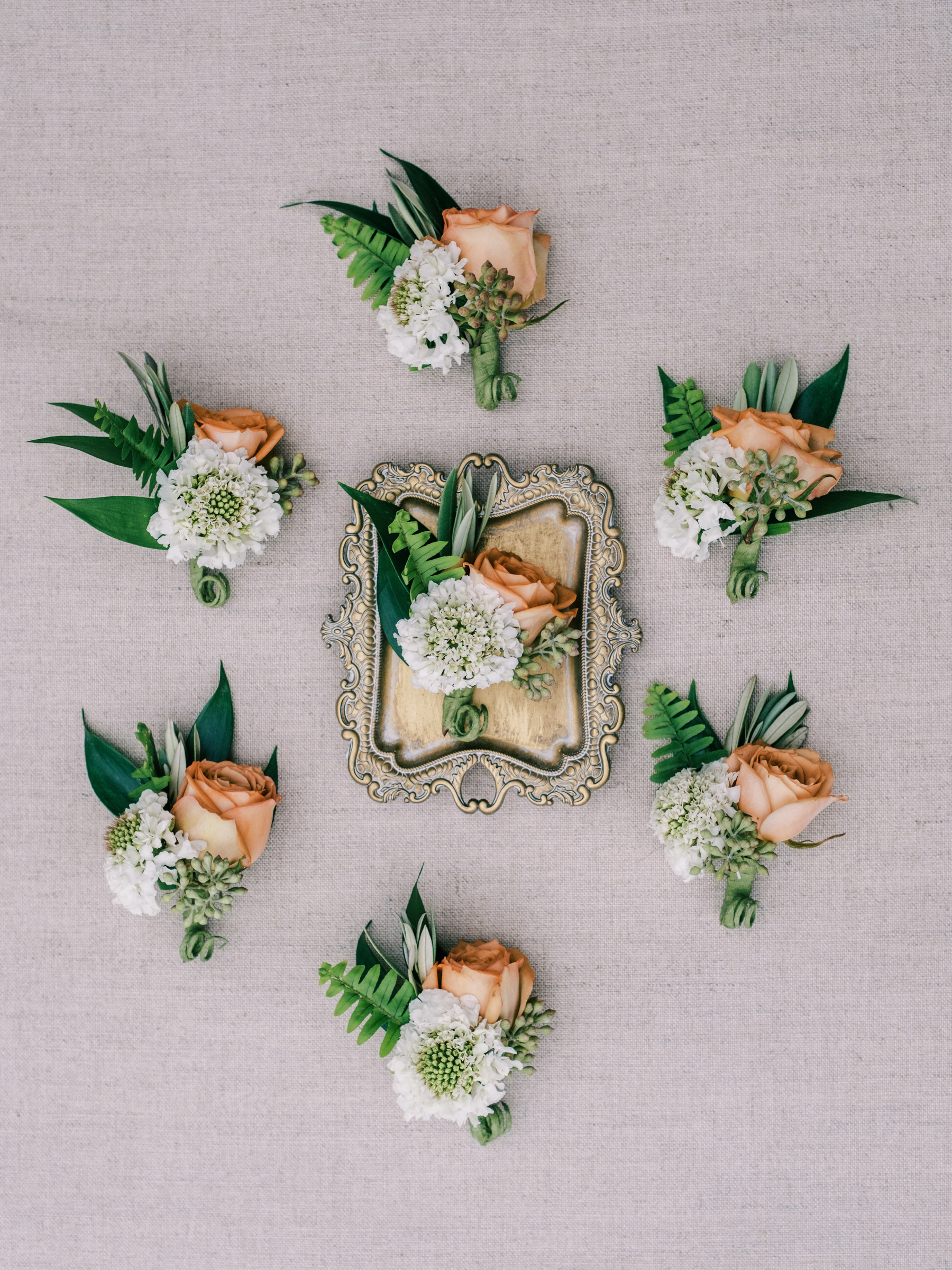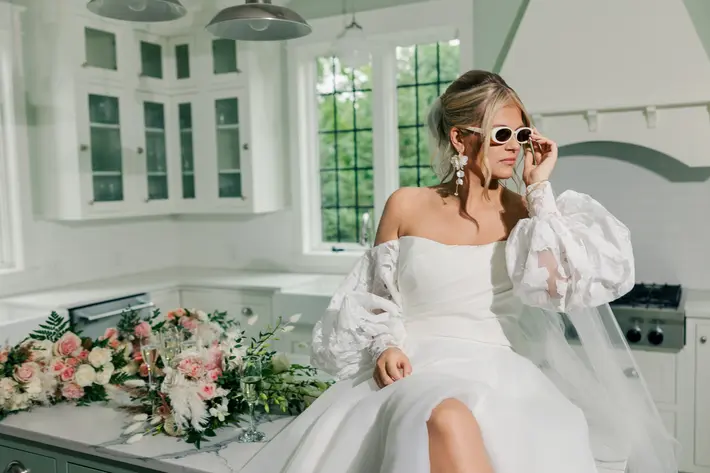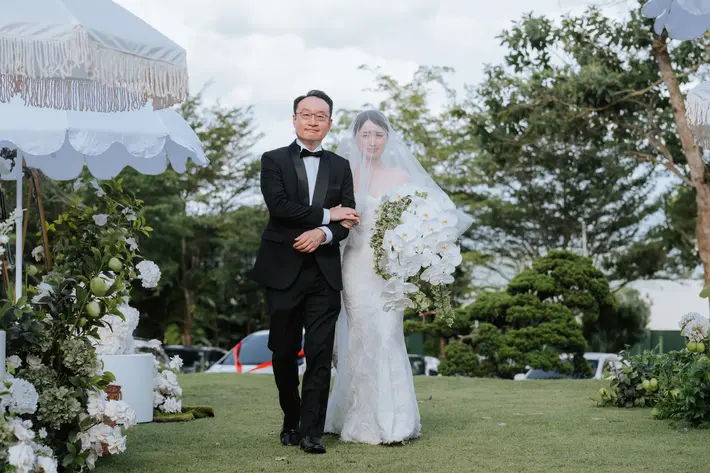How to Pick the Perfect Boutonniere
A boutonniere, or “buttonhole” in French, is a small but important part of a groom’s wedding attire, and may also be worn by his groomsmen and other important family members. Pinned to the left lapel of a suit or tuxedo it makes a handsome fashion statement that is meant to complement the bouquet and wedding color palette. While usually made of flowers, berries, greenery, other non-floral items, heirlooms, and feathers can also play a part. Here are five things you need to know in order to choose the right boutonniere/s for your wedding.

1) Color coordinate using the bride’s bouquet and wedding colors for inspiration. Boutonnieres should have at least one blossom or accent from the bouquet, and a color that is used in other flowers, linens, or decor. And of course, you’ll want the color to look great against the lapel and go well with the rest of your look.
2) Keep the size small enough to enhance the groom’s outfit without competing against it. Big blossoms are best for bouquets and are hard to manage as boutonnieres.


3) Ensure flowers stay hydrated and cool, and pin the boutonnieres on just before the ceremony, especially if you are choosing something delicate like baby's breath that may only look fresh for a few hours.

4) For warm weddings, choose a boutonniere with blossoms that won’t wilt or fall apart. While delicate flowers may look lovely, they won’t stay that way in hot sun and heat. If you’re having an outdoor summer wedding when the temperatures will soar consider blooms like roses, dahlias, and zinnias, or non-floral options, and leave tulips, daffodils, and hyacinths that wilt quickly for cooler spring days.




5) Pin it like a pro. Position the boutonniere just under the buttonhole of the left lapel. Turn the lapel over and push the pin from underneath to over the boutonniere and back under, as you would in making a large stitch. Use two pins about 3/4 inch apart so it doesn’t pivot and point the wrong direction. Take a look at everyone who will be part of the ceremony and be sure that all the boutonnieres are similar in placement.

Check out our Fashion Gallery for more inspiration, and best wishes for your wedding day!


